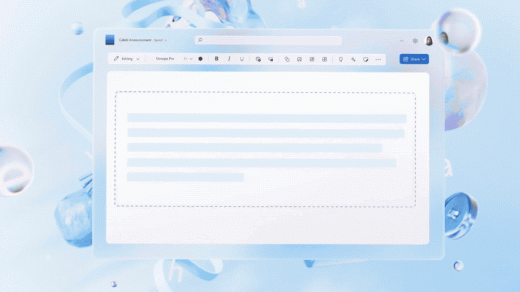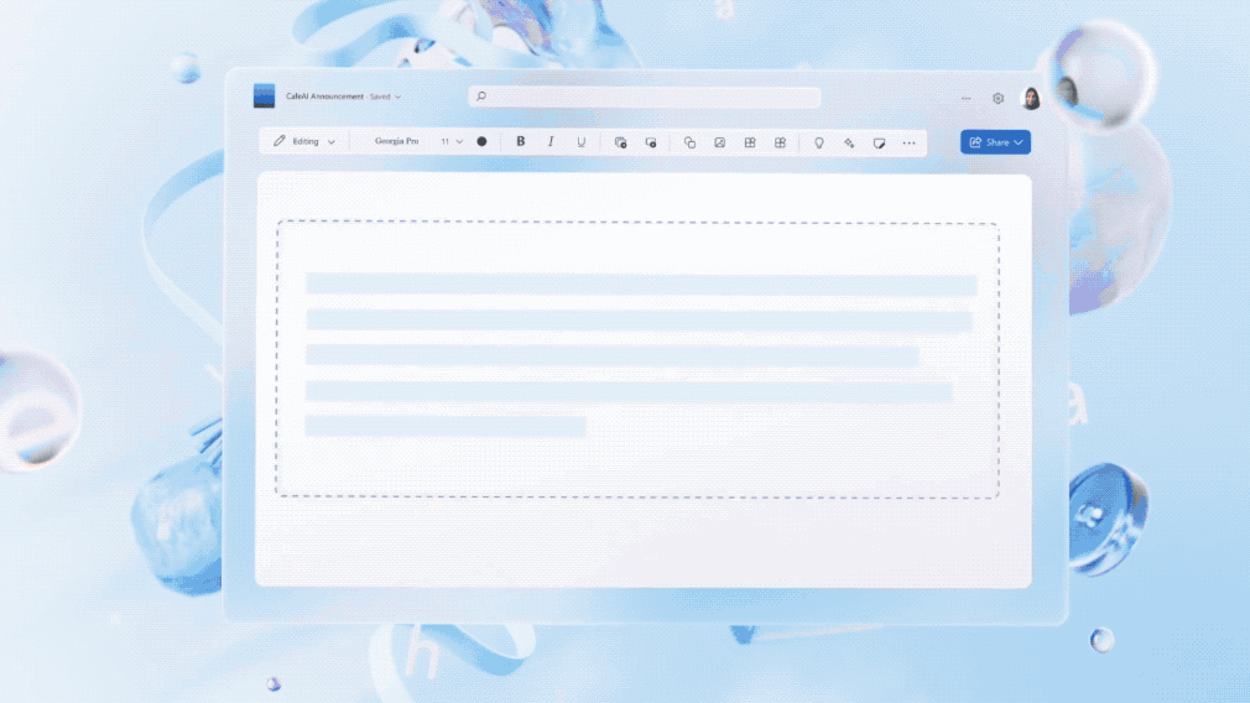With 365 CoPilot, Microsoft retains its edge over Google in the generative AI arms race
In what you might call “phase two” of their generative AI announcements, both Google and Microsoft have now announced their plans for integrating the technology across their productivity products. Microsoft announced its plans for “Microsoft 365 Copilot” Thursday, and the company appears to have retained its edge over Google—on both the strength of its partnership with OpenAI and on the speed at which it is giving its generative AI models deeper access to the proprietary business data of its enterprise users.
Jared Spataro, Microsoft’s VP for modern work & business applications, says it this way in a blog post Thursday: “Microsoft 365 Copilot . . . generates answers anchored in your business content—your documents, emails, calendar, chats, meetings, contacts, and other business data—and combines them with your working context—the meeting you’re in now, the email exchanges you’ve had on a topic, the chat conversations you had last week—to deliver accurate, relevant, contextual responses.”
Specifically, Microsoft is infusing the power of its generative AI models into its major productivity apps, which are used by millions of people for work every day. These apps include Word, Excel, PowerPoint, Outlook, and Teams.
Within business settings, the profound language understanding of OpenAI’s GPT-4 models can be leveraged in some potentially compelling ways.
In Microsoft Word, Copilot can be used to generate a first draft of a document, which the user then customizes to fit their purpose. It’s used as a starting point and a way of avoiding “blank page syndrome,” Microsoft says. “Sometimes Copilot will be right, other times usefully wrong—but it will always put you further ahead,” Spataro writes in the blog.
In PowerPoint, the user can feed Copilot as much business information as they have, and the tool will help them form a compelling slide show that uses more of the available features in the app.
In Outlook, CoPilot can be used to read and summarize long email threads. It can summarize key discussion points, including who said what, and where people are aligned and where they disagree, and suggest action items, all in real time during a meeting, Spataro writes.
In Excel, Copilot can help “analyze trends” and create professional-looking data visualizations.
The company also introduced a new generative AI chatbot called Business Chat, which acts as a sort of smart concierge to expose users to the new AI features. For example, users can give the bot a natural language prompt such as, “Tell my team how we updated the product strategy,” and it will generate a status update based on the morning’s meetings, emails, and chat threads.
Microsoft’s pitch is that the AI features can take care of much of the drudgery involved in business tasks so that workers can stay more engaged with what they’re trying to get done.
“We have become separated from the soul of our work,” Spataro said during a demo Thursday. “We don’t just need a better way of doing the same things. We need a whole new way of working.”
If all of this works as advertised, the new AI assistant features could save significant amounts of time for workers. With CoPilot, Microsoft is leveraging the power of OpenAI’s newest language model, GPT-4, to make big workflow changes within one of its core products, its enterprise productivity suite. CoPilot should be seen as the culmination of Microsoft’s yearslong engagement with OpenAI, and you can expect that Microsoft will continue giving CoPilot access to more and more business intelligence data to make it even more relevant during more work tasks. The company says it will be rolling out the new features to Microsoft 365 users “within the coming months.”
Google was quick to announce its plans of embedding generative AI features within its Workspace productivity apps, but the search giant’s plans seem less bold than Microsoft’s simply because they do not involve exposing Google generative AI models to proprietary work data. Microsoft has years of incumbency and experience in the corporate settings, and it’s using that standing to make generative AI actually useful, not just something that chats and writes poems.
“This entire movement is about helping make humans more productive and efficient and even augment some human limitations,” Creative Strategies analyst Ben Bajarin wrote in a newsletter Thursday. “That’s why when the dust settles . . . apps, and services that hone in and emphasize speedier and more efficient workflows will have the most impact and staying power.”
(23)



